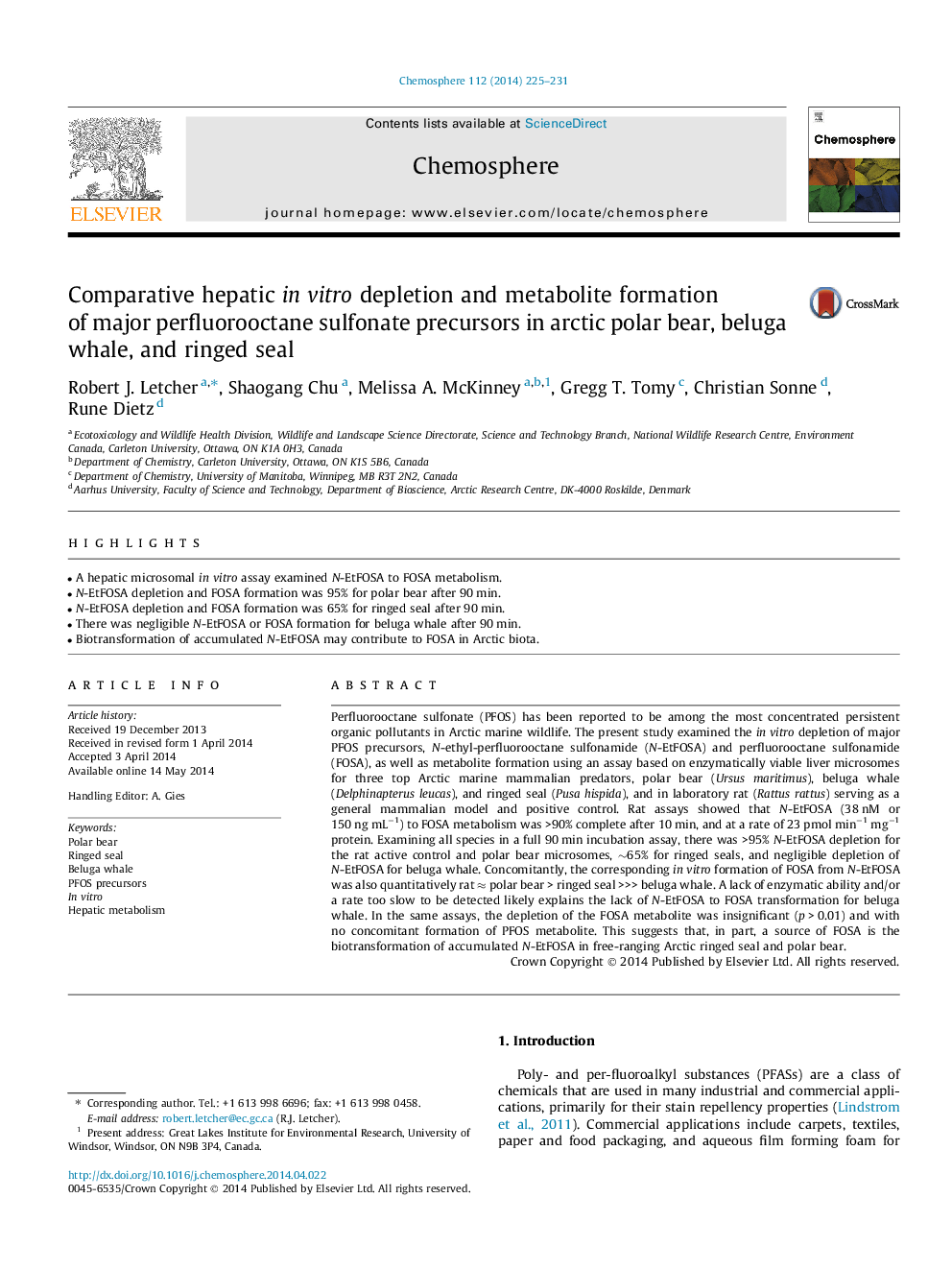| Article ID | Journal | Published Year | Pages | File Type |
|---|---|---|---|---|
| 6308803 | Chemosphere | 2014 | 7 Pages |
â¢A hepatic microsomal in vitro assay examined N-EtFOSA to FOSA metabolism.â¢N-EtFOSA depletion and FOSA formation was 95% for polar bear after 90 min.â¢N-EtFOSA depletion and FOSA formation was 65% for ringed seal after 90 min.â¢There was negligible N-EtFOSA or FOSA formation for beluga whale after 90 min.â¢Biotransformation of accumulated N-EtFOSA may contribute to FOSA in Arctic biota.
Perfluorooctane sulfonate (PFOS) has been reported to be among the most concentrated persistent organic pollutants in Arctic marine wildlife. The present study examined the in vitro depletion of major PFOS precursors, N-ethyl-perfluorooctane sulfonamide (N-EtFOSA) and perfluorooctane sulfonamide (FOSA), as well as metabolite formation using an assay based on enzymatically viable liver microsomes for three top Arctic marine mammalian predators, polar bear (Ursus maritimus), beluga whale (Delphinapterus leucas), and ringed seal (Pusa hispida), and in laboratory rat (Rattus rattus) serving as a general mammalian model and positive control. Rat assays showed that N-EtFOSA (38 nM or 150 ng mLâ1) to FOSA metabolism was >90% complete after 10 min, and at a rate of 23 pmol minâ1 mgâ1 protein. Examining all species in a full 90 min incubation assay, there was >95% N-EtFOSA depletion for the rat active control and polar bear microsomes, â¼65% for ringed seals, and negligible depletion of N-EtFOSA for beluga whale. Concomitantly, the corresponding in vitro formation of FOSA from N-EtFOSA was also quantitatively rat â polar bear > ringed seal >>> beluga whale. A lack of enzymatic ability and/or a rate too slow to be detected likely explains the lack of N-EtFOSA to FOSA transformation for beluga whale. In the same assays, the depletion of the FOSA metabolite was insignificant (p > 0.01) and with no concomitant formation of PFOS metabolite. This suggests that, in part, a source of FOSA is the biotransformation of accumulated N-EtFOSA in free-ranging Arctic ringed seal and polar bear.
